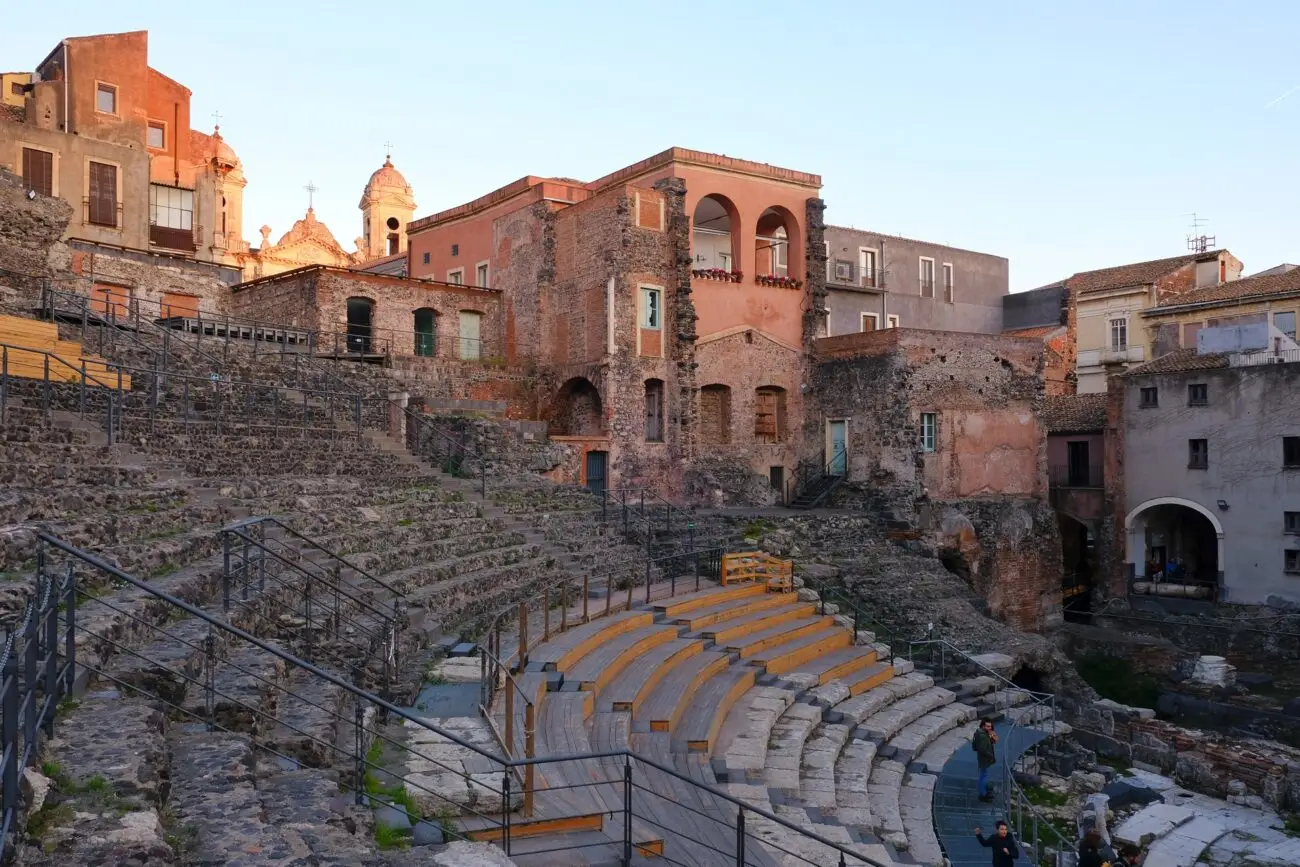Catania may not be the first place you think of for a winter trip to Sicily—but that’s exactly what makes it such a wild and wonderful surprise. Imagine spending the off-season with lava in the distance, fireworks overhead, and pasta on your plate. Things to do in Catania in winter range from wandering lava-stone streets to chasing volcano views and uncovering quiet archaeological ruins between meals. Winter here isn’t bleak—it’s buzzing.
Part of what drew me to Sicily in the first place was its mild winter—I wasn’t chasing snow, just something cooler without the chill. Catania turned out to be the perfect in-between. With Mount Etna looming in the distance, it doesn’t ease you in gently. But give it a moment, and you’ll find a city full of edge, energy, and Sicilian flair.
While my visit fell during the festive season—when many shops and restaurants had limited hours—I still uncovered plenty to fill five days. This guide is based on my personal experience as a solo traveler on a mid-range budget—seeking culture, photo stops, and real local flavour without splurging on luxury.
Use it as a launchpad for your own winter adventure—or a helpful starting point no matter when you visit.
This guide is based on my personal travels as a solo traveler on a mid-range budget—seeking culture, photography moments, and real experiences without luxury price tags.
If you want a more reflective, personal read, you can also check out my long-form post: New Year in Catania
What to Know About Catania
Catania is often called Sicily’s black city—not for its mood, but for its architecture. Much of the city was built (and rebuilt) using dark volcanic stone from nearby Mount Etna, which looms dramatically on the skyline like a smoky reminder that nature’s in charge.
In 1693, a massive earthquake devastated most of southeastern Sicily, including Catania. But instead of simply restoring what was lost, the city was redesigned on a bigger, bolder scale. Narrow medieval alleys were replaced with wide boulevards and spacious piazzas—providing a perfect canvas for the Baroque era to show off. Monumental palaces, sweeping staircases, and facades with more drama than a Netflix series.
Catania is a city of contrasts: lava-stone alleys beside marble porticoes, seafood markets tucked under Roman ruins, and a tempo that’s equal parts grit and grandeur.
A few fun facts:
- Catania has been destroyed and rebuilt at least seven times—mostly thanks to Mount Etna and the odd earthquake.
- It’s home to one of Europe’s oldest universities, founded in 1434.
- The local elephant statue (u Liotru) is said to have magical powers… which, honestly, wouldn’t surprise me.
How to Get to Catania
By Air
Catania Fontanarossa Airport (CTA) is the main international gateway to eastern Sicily. There are no direct flights from Singapore, but you can easily connect via major hubs like Rome (ITA Airways), Milan (easyJet), Istanbul (Turkish Airlines), or Doha (Qatar Airways). Flight schedules are more frequent in spring and summer, but winter connections are still solid.
By Train
For a more unique experience, take the direct train from Rome—the same one I rode on my overnight sleeper journey, where the entire train boards a ferry to cross the Strait of Messina. Half the train continues west to Palermo, while the other half heads east toward Catania and Taormina.
Read about my sleeper train journey from Rome to Sicily
1–5: Essential Sights in the Heart of Catania
Mount Etna
Catania lives in the shadow of this iconic volcano—sometimes literally. A winter visit offers a chance to hike across lava fields, descend into a volcanic cave, and sample honey, olive oil, and wine at a family-run producer afterward.
Book a tour: Mount Etna day trip from Catania
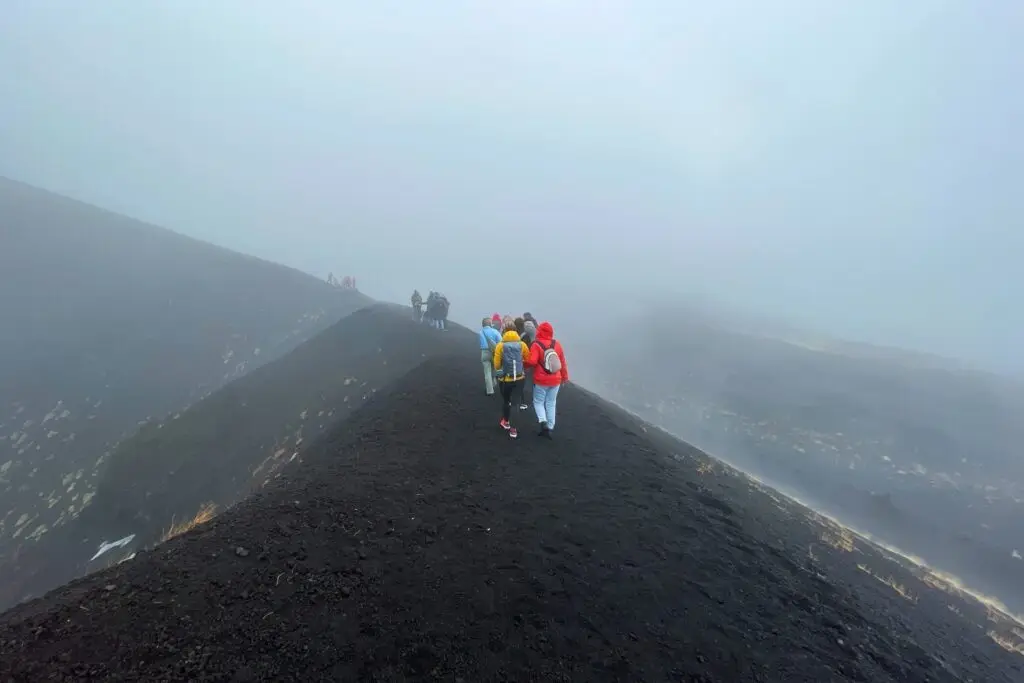
Piazza Duomo & Elephant Fountain (Piazza Duomo & Fontana dell’Elefante)
Catania’s central square is framed by grand Baroque facades and anchored by its quirky lava-stone mascot: a smiling elephant balancing an ancient obelisk. The statue, affectionately called u Liotru, is beloved by locals and oddly photogenic from every angle.
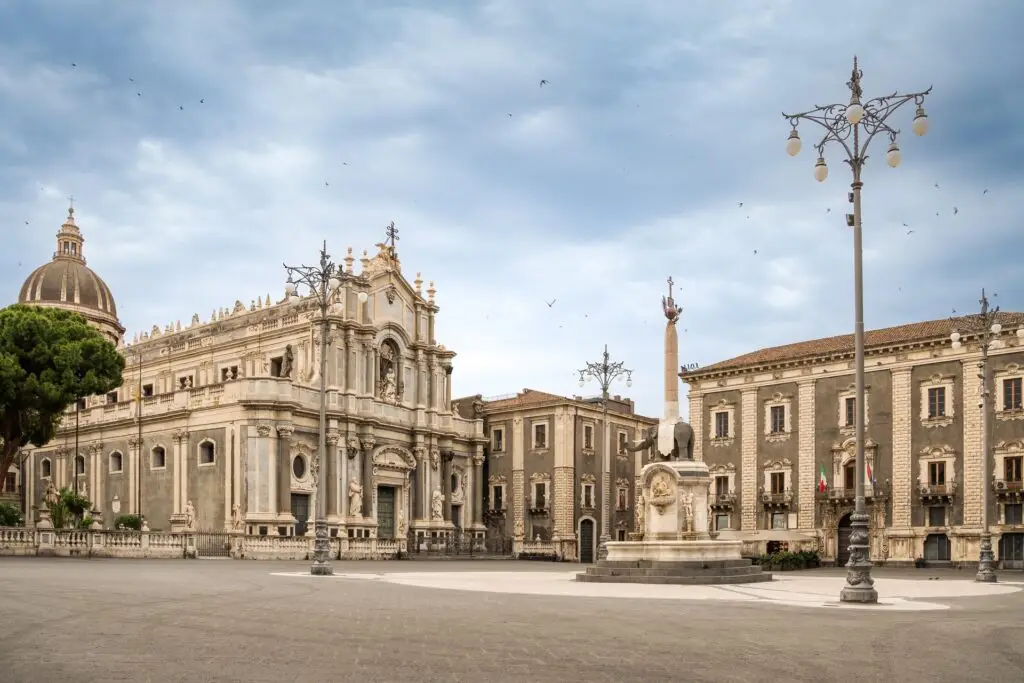
Roman Theatre (Teatro Romano)
Hidden behind an ordinary-looking street facade lies this 2nd-century AD theatre that once held over 7,000 spectators. Worn stone seating wraps around a central stage, with cats lazing among the ruins like they’ve lived there forever. Atmospheric, under the radar, and surprisingly central.
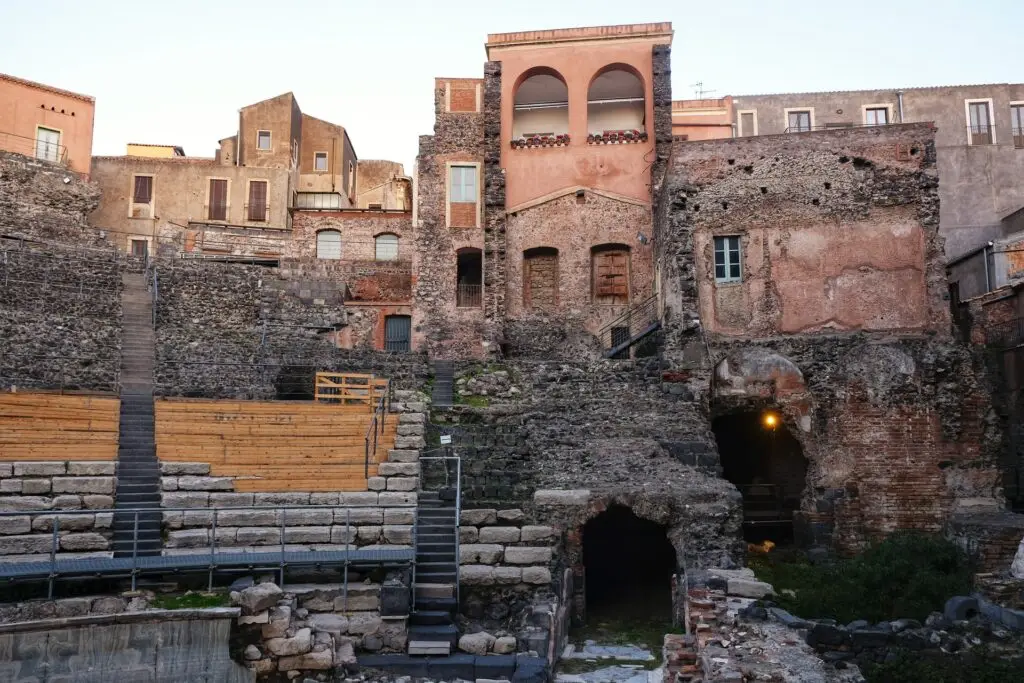
Bellini Opera House (Teatro Massimo Bellini)
Named after Catania’s native son, composer Vincenzo Bellini, this lavish opera house is everything you’d want from Italian drama: plush red velvet, golden balconies, and a ceiling painted with scenes from Norma. Even if opera isn’t your thing, peek inside if you can—or admire it lit up at night.
Guided tours available on select days.
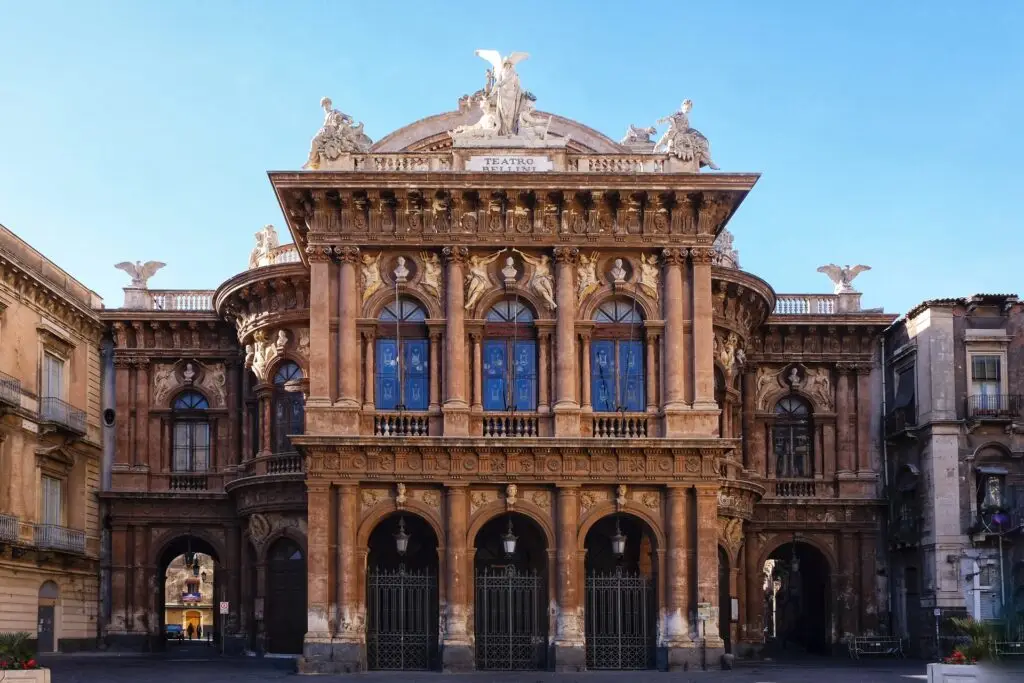
Bellini Garden and Music Pavilion (Villa Bellini & Chiosco della Musica)
This lush public park is Catania’s green lung, with palm-lined paths, sculpted gardens, and a grand music kiosk in the center. It’s a popular place for locals to stroll, sip coffee, or people-watch in the sun. From the park’s upper terrace, you’ll also get a view down the city’s central spine: Via Etnea.
6–11: The Church Circuit (Catania Has More Churches Than Cafés—Literally)
Like Thailand and its temples, Catania has churches on every corner—and visiting them isn’t necessarily about faith. Many are so beautifully constructed, they feel more like living museums of religious art and local history. These are places where Sicily’s Baroque obsession really shows off—gold on marble on fresco, layered like a very extra cake.
You don’t need to visit them all (trust me, burnout is real), but these are the most visually rewarding ones to pick from:
Cathedral of Saint Agatha (Basilica Cattedrale di Sant’Agata)
Catania’s most important church, fronting Piazza Duomo with Lava-stone grandeur and religious significance wrapped into one. Inside, you’ll find relics of Saint Agatha and the tomb of composer Bellini.
Church of the Badia of Saint Agatha (Chiesa della Badia di Sant’Agata)
Famous for its panoramic rooftop terrace with sweeping views of the city and Mount Etna. A small fee grants you a spectacular 360-degree perspective.
Benedictine Monastery of San Nicolò l’Arena (Monastero dei Benedettini di San Nicolò l’Arena)
One of Europe’s largest monasteries. Take a guided tour through cloisters, ancient lava tunnels, and stunning library halls straight out of a Dan Brown novel.
Book a guided tour: Visit the Benedictine Monastery
Church of Saint Benedict (Chiesa di San Benedetto)
Known for its dramatic entrance staircase and ornate ceiling frescoes. Don’t forget to look up.
Basilica of the Collegiate (Basilica della Collegiata)
Soft light, elegant arches, and a peaceful interior just off Via Etnea.
Via Crociferi
While not a church itself, This historic street is lined with multiple Baroque churches (four of them, in fact) and a photogenic archway. Easily one of the most beautiful streets in the city.
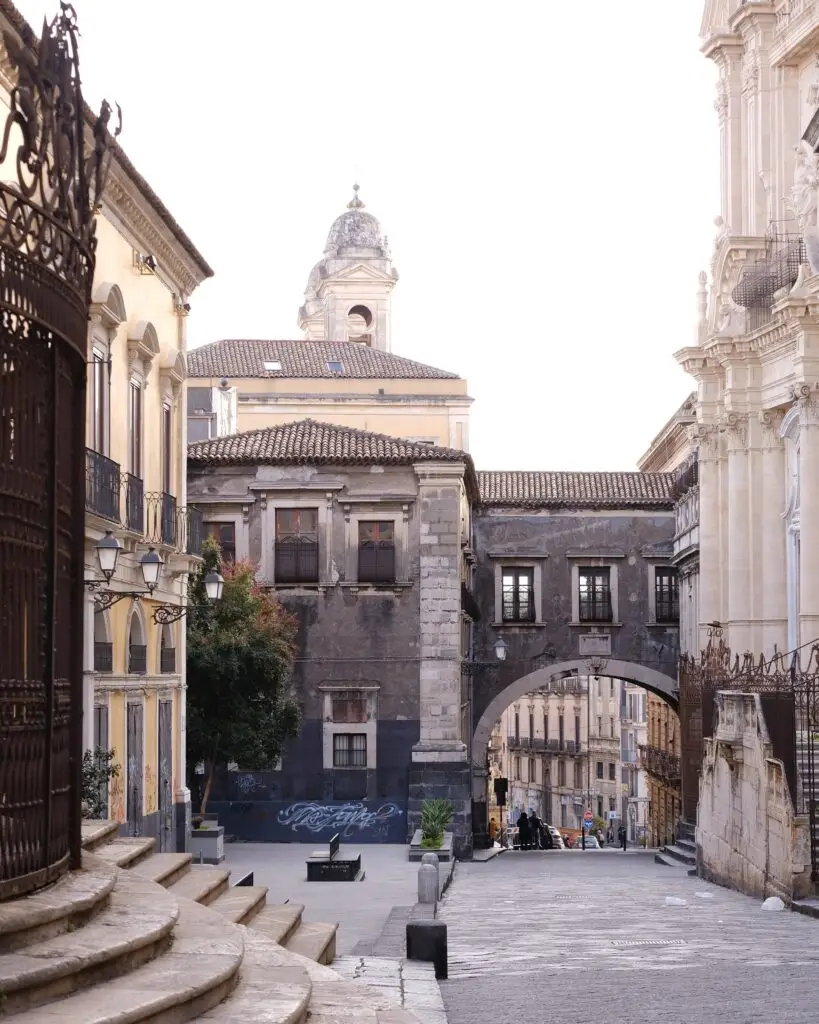
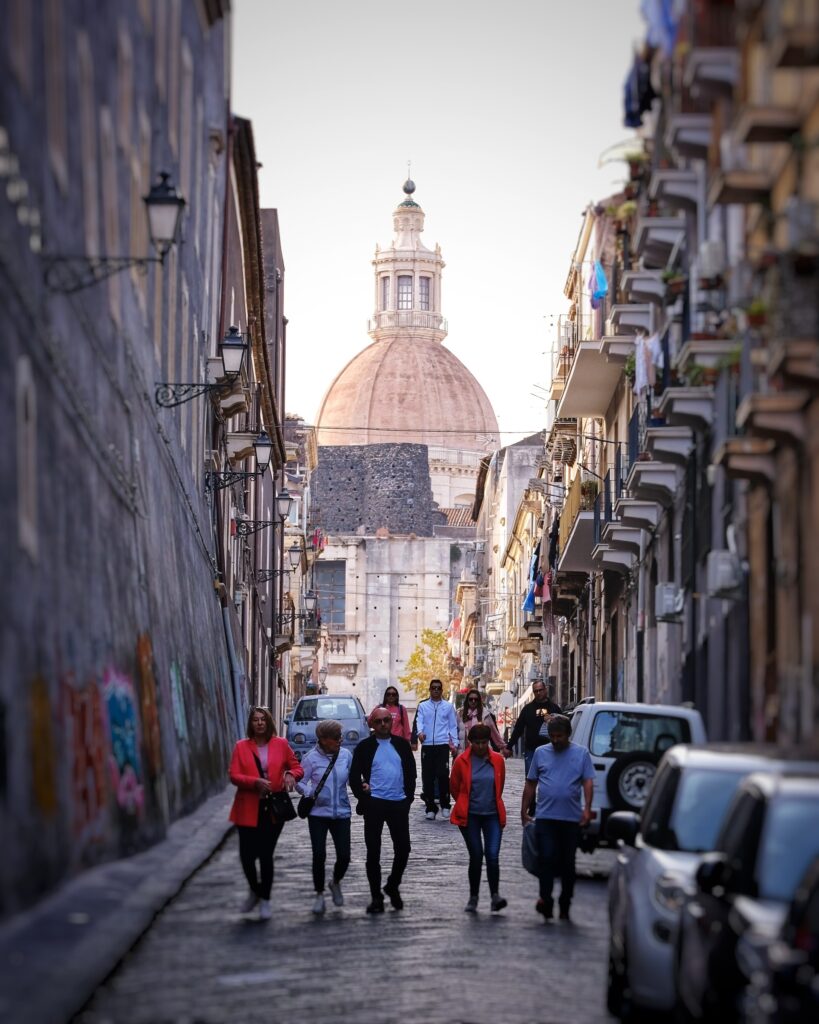
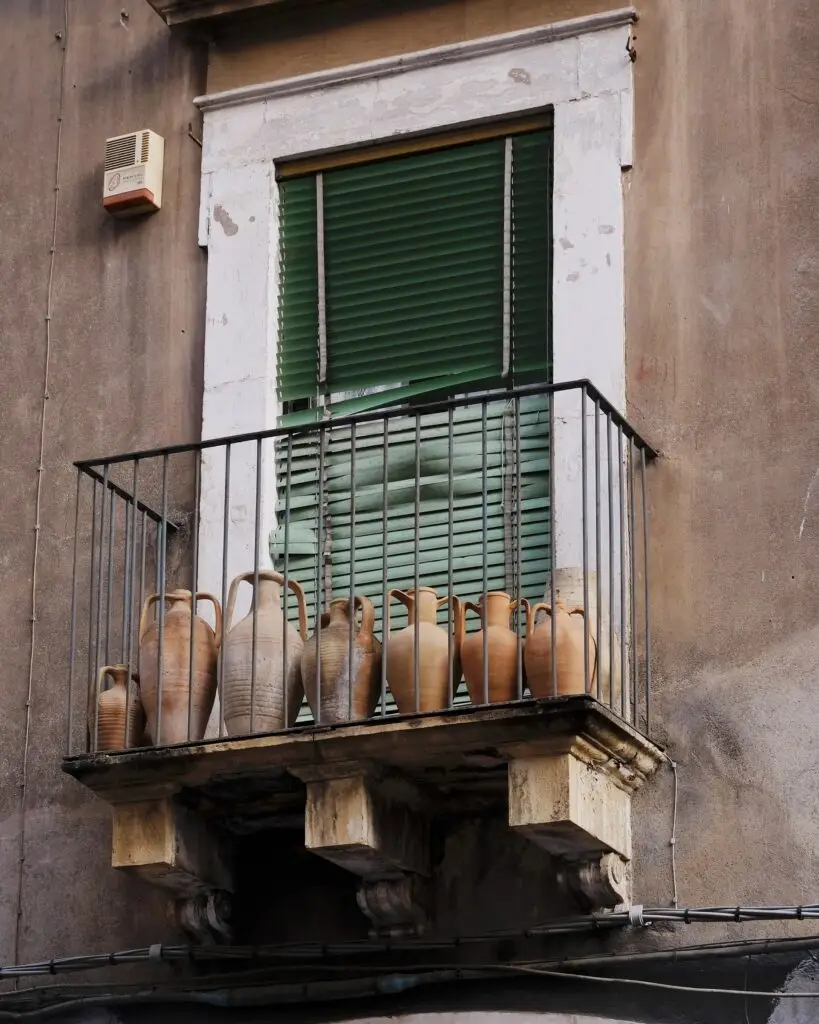
Bonus Sights (If You Have Time)
If you’ve got a flexible itinerary or just enjoy wandering into unexpected corners, these stops offer a mix of architectural interest, creative expression, and quirky charm.
- Negozio Frigeri – Art Nouveau shopfront
- Palazzo Rosa – Pretty blush-pink balconies
- Palazzo Mazzoni – Elegant neoclassical corner building
- Garage Musmeci – 1960s brutalist parking garage
- Fontana di Proserpina – Mythology in marble just outside the station
- Amenano Fountain (Fontana dell’Amenano) – Marble fountain by the fish market
- Well of Gammazita (Pozzo di Gammazita) – Visible from the street, eerie and hidden
- San Berillo District – Urban art and murals (includes ART & FUN District + Demetrio Di Grado murals)
- Silos Murals (Port Area) – Towering street art visible from afar
Markets to Explore (Go Early)
Catania’s markets are lively, chaotic, and unapologetically local. Just note—during the holidays, many stalls shut down or run on reduced hours. Morning visits are best for full energy (and fewer empty tables).
Fish Market (La Pescheria)
Just behind Piazza Duomo, this open-air seafood circus is where octopus, swordfish, and Sicilian volume collide. Vendors shout over the splash of ice, shoppers haggle like pros, and somewhere, someone’s frying calamari. You don’t need to buy anything—just walk through and let your senses do the work.
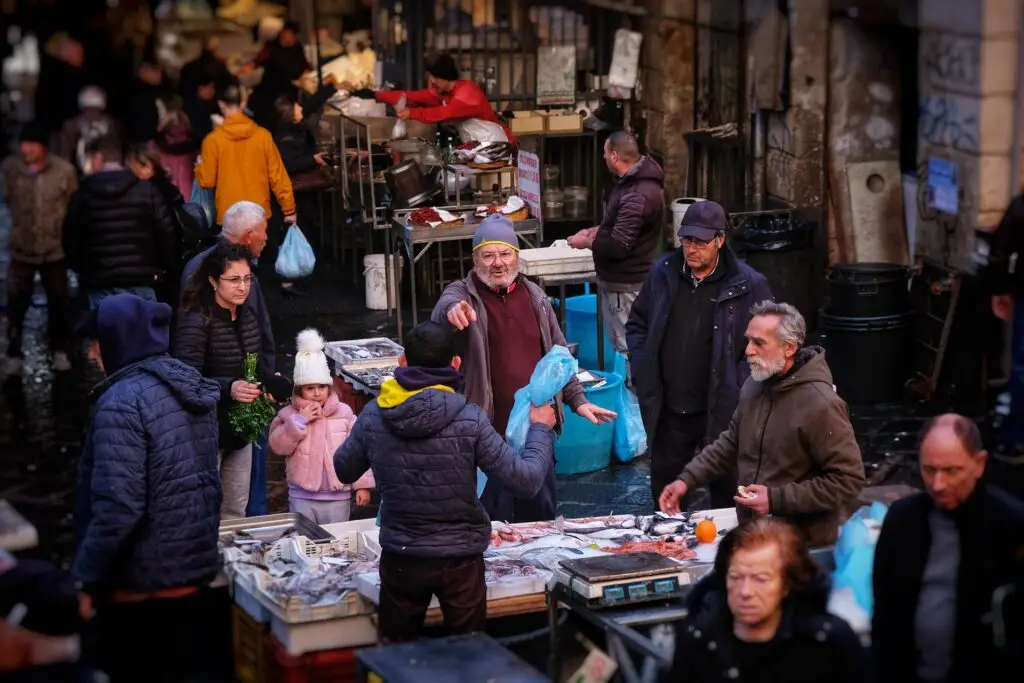
Fera ’O Luni (Piazza Carlo Alberto Market)
Catania’s oldest and biggest daily market—part flea, part produce, part “wait, why am I buying socks?” scene. It spans several streets with everything from cheap fashion to kitchenware and roasted nuts. I missed it (holiday closure!), but it’s beloved for a reason.
Day Trips from Catania (If You Have Time to Roam)
Catania makes a solid base for exploring eastern and southern Sicily—especially if you’re skipping the rental car. These day trips can be done with public transport or pre-booked tours.
The Godfather Tour (Savoca & Forza d’Agrò)
These two hilltop villages stood in for Corleone in The Godfather. Expect cobbled lanes, film locations, lemon granita, and serious cinematic charm. You can book the tour I did, however, you’d have to make your own way to Taormina for the pick up. Or book this one via GetYourGuide from Catania: Godfather Movie Day Trip
Valley of the Temples & Villa Romana del Casale (Piazza Armerina)
One of the best combos for ancient history buffs. The Valley of the Temples features grand, windswept Greek ruins; Villa Romana del Casale houses over 3,500 square metres of intricate Roman mosaics.
You can book this tour by GetYourGuide in advance online—or like I did, directly at the Tourist Service box office beside Basilica Cattedrale di Sant’Agata. The tour acts as a driver service: they pick you up, drop you off, and you handle your own entry tickets. Way easier than figuring out public transport.
Taormina, Savoca & Castelmola Tour
If you’re short on time but want maximum cinematic charm and coastal beauty, this tour checks all the boxes. A great combo if you didn’t get to base yourself in Taormina like I did.
Read my full story here: add taormina blog link here
Syracuse, Ortigia & Noto combo
If you don’t intend to base yourself like I did in Ortigia, this day tour saves you the hassle of juggling multiple train transfers. Otherwise, Syracuse (with Ortigia connected to it) is just a 1.5-hour train ride away and can be explored independently.
Enter Ortigia blog link here.
Where to Stay
- Centro Storico – The most convenient base, walkable to major sights, markets, and restaurants. Expect a bit of street noise but maximum access.
- Via Etnea Area – A good balance between buzz and calm, close to shops and cafés with some quieter corners.
- La Civita / Fish Market Area – Lively, local, and a little gritty. Great for street photography and morning market strolls.
- Near Villa Bellini – Leafier and more residential. A touch quieter, especially if you want space to decompress after long sightseeing days.
- Rooftop Airbnb – The one I stayed in had a view of the Duomo and Mount Etna (on a good day) and was ideal for fireworks. Just beware: the stairs are not for the faint of knee.
Where to Eat
- Ciauru i Mari – Famous for seafood, but their Pasta alla Norma was my best in Sicily.
- De Fiore Nuova Trattoria del Forestiero – Run by Mamma Rosanna and her family since the 1960s. Traditional, home-style Sicilian fare. The vibe is old-school and warm—the kind of place that’s been feeding locals since the ‘60s, with no plans to change.
- Don Peppinu – For gelato, skip the single scoop and order what’s often called the brioche con gelato—a massive, pillow-soft bun stuffed with as many flavors as you can handle. It’s less a dessert and more a personality test. If you’re Southeast Asian like me, maybe skip lunch beforehand.
- Street Food near Via Gisira – Great for wandering snacks—fried goodies and skewers near the market.
Want a deeper dive?
Join a Catania street food walking tour for guided tastings and local history.
Where to Shop
- Via Etnea – Catania’s main shopping street lined with high-street brands, souvenir stalls, and pastry shops
- Vetriamo – Stained-glass crafts (closed when I visited, still worth a peek)
- Via San Michele – A charming street known for its artist community, galleries, and indie crafts
- ORO d’Etna – A must-visit for local honey, olive oil, and wine (I still regret not buying the larger jar of melon-infused honey)
Quick Tips for Visiting Catania in Winter
- Weather: 10–15°C, bring layers and waterproof shoes
- Festive Buzz: Christmas til Day of Epiphany (Jan 6) is lively. Then it quiets down
- Closures: Expect odd hours and closures around holidays. Plan ahead
- Markets: Morning is best
- Packing: Umbrella + gloves = winning combo
- Street Art: From murals to graffiti, it keeps every walk interesting
- Airport Transfer: Use the AMTS Alibus—runs every 25 mins
- Transport: Walk when you can, train for day trips
